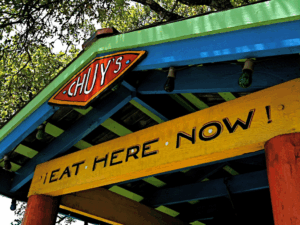Food display building isn’t just about variety (maximum options), practicality (filling shelves) or aethetics (beautiful presentation). Dedicated food displays, such as endcaps (at the aisle ends), standalone floor displays, and Power Wings, rank among the most effective sales drivers in the retail food environment. These features strategically break product out of its standard shelving location to achieve maximum visibility and capitalize on shopper psychology, often resulting in significant sales lifts for the featured items through effective food merchandising strategies. Implementing effective food merchandising techniques can further enhance the impact of these displays, especially when used in conjunction with food display building.
Impact and Results
Utilizing featred impulse food display building techniques can create an appealing shopping environment that encourages spontaneous buys. Implementing effective food merchandising techniques can further enhance the impact of these displays, by capturing the shopper’s attention, drawing them in. By utilizing creative layouts and strategic placements of signature item displays within the store, retailers can further optimize their food merchandising efforts.
- Significant Sales Lift: Dedicated displays are proven to dramatically increase sales of featured items. Studies have linked them to sales increases ranging from 30% to over 400%, depending on location, product, and promotion.
- High Visibility: Products on endcaps and floor displays benefit from increased exposure, as these areas are naturally high-traffic zones that shoppers pass at least twice (approaching and leaving the aisle).
- Impulse Purchase Conversion: Dedicated features are prime real estate for converting planned purchases into higher basket sizes and generating unplanned (impulse) purchases. An estimated 62% of shoppers make impulse buys, and a substantial portion of these are directly driven by in-store displays.
Core Principles of Successful Featuring
Effective product featuring leverages key principles of shopper marketing to influence purchase decisions in the moment:
1. Disruption of Routine and Aisle Flow
- Breaking the Scan: Shoppers in aisles typically follow a routine, quickly scanning shelves for familiar items. Dedicated displays disrupt this routine by presenting a highly visible focal point, forcing the shopper to stop and notice the product.
- Location, Location, Location: Displays placed at the beginning or end of a shopping path (like an endcap) or in high-traffic areas (near the entrance, checkout, or staple categories like dairy and meat) gain maximum exposure.
2. Cross-Merchandising and Meal Solutions
- Contextual Selling: Placing complementary products together on one display simplifies the shopper’s meal-planning process and encourages add-on purchases.
- Example: Featuring pasta sauce and dry pasta on an endcap near the fresh meat or vegetable aisle.
- Increased Basket Size: By solving a need or completing a meal, cross-merchandising drives a higher average transaction value per customer.
3. Visual Dominance and Product Blocking
- Mass and Density: Featuring a product with a large, dense “wall” of inventory, blocked in 2-4 facing widths across multiple vertical tiers, creates visual dominance that is difficult to ignore (the “Filling Space Increases Impact” principle).
- Theatrical Presentation: Effective displays use color, lighting, signage, and creative structures to create a visual story—whether it’s a seasonal theme, a meal idea, or a specific brand message—making the product more engaging than a standard shelf presentation.
4. The Power of Suggestion and Urgency
- Signage and Promotion: Clear, bold signage highlighting a special price, limited-time offer, or unique product benefit accelerates the purchase decision. Shoppers often associate the display itself with a deal or promotional value.
- Trial and Introduction: Dedicated features are ideal for launching new products. They provide a high-profile “testing ground” where a product can gain rapid exposure and consumer trial.
In conclusion, the strategic use of dedicated product displays is indispensable for maximizing sales velocity in the modern grocery environment. These features are not merely product shelves; they are dynamic, high-impact marketing assets that leverage human psychology at the point of purchase. By consistently mastering and applying the core principles—creating disruption in the routine, delivering cross-merchandised meal solutions, establishing clear visual dominance, and communicating urgency through effective signage—retailers can reliably convert routine aisle traffic into impulse conversions and higher basket sizes. Ultimately, a strategic approach to food merchandising is the most powerful tool available to achieve significant and sustainable sales growth.
Merchandise Food advises food retailers, hospitality and restaurant groups across North America and can help you develop a winning strategy for your retail food stores.


